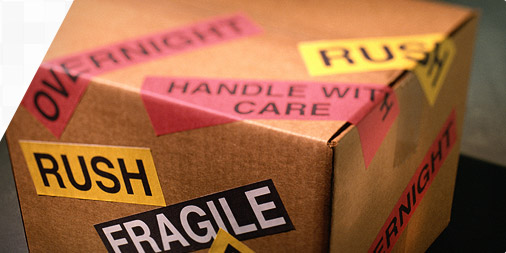 Amazon knows what it takes to do retail, as it continues to beat the competition online. What the retailer feels it needs improvement in is its’ delivery network. Last year’s Christmas shopping season turned out to be a disaster for the retail giant, as their primary partner UPS failed to deliver on-time, not to mention other deliveries. It became clear that the delivery of the product is just as important as the purchase itself. The buying is the shopper’s part. The delivery is Amazon’s. It wants to make its’ delivery network stronger and Amazon is evaluating how this can get done.
Amazon knows what it takes to do retail, as it continues to beat the competition online. What the retailer feels it needs improvement in is its’ delivery network. Last year’s Christmas shopping season turned out to be a disaster for the retail giant, as their primary partner UPS failed to deliver on-time, not to mention other deliveries. It became clear that the delivery of the product is just as important as the purchase itself. The buying is the shopper’s part. The delivery is Amazon’s. It wants to make its’ delivery network stronger and Amazon is evaluating how this can get done.
The article covered the grocery and general merchandise delivery options Amazon can choose to implement to get the results it wants. A parcel carrier could work, which could entail the carrier bringing the general merchandise from their sorting location, and combine it with the grocery delivery truck at the Amazon fulfillment center. It would be very challenging to get the delivery done the same-day. Here are some of the quoted changes Amazon stated it will implement to revamp its’ delivery network:
- UPS, who has been the primary carrier, will be replaced by a network of regional carriers.
- The top 40 markets will be served by a private fleet being built by Amazon to support an expansion of its online grocery business” (Amazon Fresh). This means there will be a big expansion from the three metro areas currently served by Amazon Fresh.
- The private fleet network will co-mingle groceries with general merchandise.
- Orders will be routed through Amazon’s 55 fulfillment centers, with deliveries made the same day, the next day or, at most in two days.
The main discussion in the Forbes article was whether utilizing a same-day courier could be the key to the optimal delivery revamping that Amazon is looking for. The advantage of using a courier is a courier specializes in same-day delivery. This is their expertise and they are reliable at doing it. A courier service can transport general merchandise and groceries directly from point-to-point within hours. Same-day delivery is the goal for AmazonFresh, which currently is rolled out in a small number of markets.
The disadvantage of using a courier is primarily the cost. For this type of service, a courier can be expensive. Yet, with a same-day courier like A-1 Express within a market with the right demographics, such as San Francisco, pricing can be lowered and there will be high volume in big cities. It makes sense to use this Los Angeles Courier solely or in conjunction with a private fleet. A courier is also a great source to correct delivery errors, redeliveries and product returns.
Amazon indeed has high expectations and so does its’ customers. Whether groceries or general merchandise, Amazon has to deliver or its’ competitors will. Wal-Mart, for example, has launched a same-day grocery service of its’ own. “WalMarttoGo” not only offers same-day delivery of groceries ordered online, but shoppers can also pick up their order at a local Wal-Mart store. This isn’t an option that Amazon has for its’ shoppers. Amazon’s delivery network has to be effective to compete long-term.
Reference: 3.19.14, Forbes Magazine, Steve Banker, Amazon Revamps Its U.S. Delivery Network